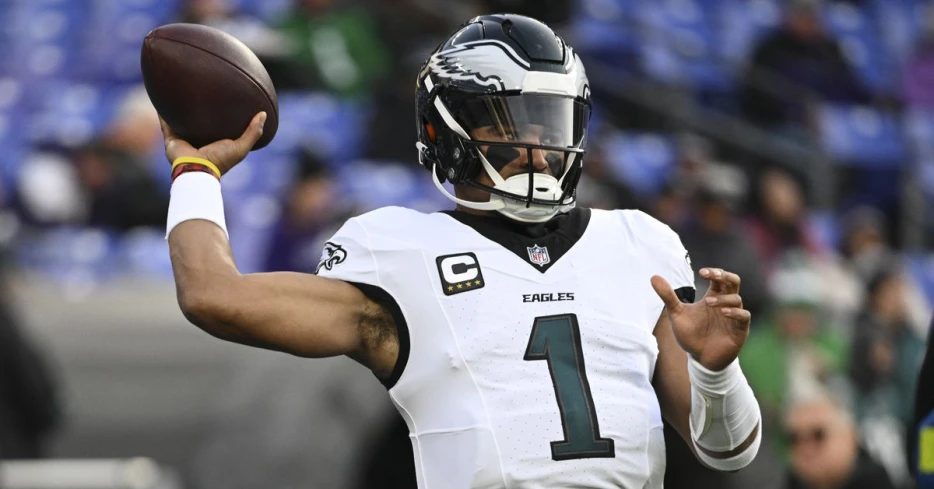
 Bleeding Green Nation
Bleeding Green Nation
A closer look at the development of the Eagles’ franchise quarterback.
This is the second of a series of posts, breaking down how Jalen Hurts has dramatically improved his game since he joined the league. Each category focuses on a specific type of mistake he used to make—and how he’s grown past it. The whole series will be linked to an episode of my podcast, which you can find here. I have a huge thank you to James Foster (one of the best analysts out there) for providing me with old Hurts’ film and for helping with this series. Go and follow him and subscribe to his YouTube channel.
In Part 1 of this series, we looked at how Jalen Hurts learned to stop forcing the issue outside of structure. In part 2, I’m going to look at one of the more underrated, yet arguably more impressive areas of his growth, his development as a touch passer.
Touch throws are one of the most underappreciated and underdeveloped aspects of quarterback play. We tend to obsess over arm talent: velocity, raw strength, throwing angles, and how far a guy can launch it off-platform. Those traits are easy to spot on film and even easier to showcase at pro days. How many times have we seen viral clips on social media from a quarterback’s pro day when he launches it off platform? But what often gets the ability to layer a ball over defenders with control, especially in the intermediate parts of the field. In a league where nearly every defense is playing some variation of match zone, those gaps between hook defenders and the secondary have become the most contested, and one of the most valuable, parts of the field to target.
Touch throws are so difficult because the margin for error is slim. Too much air under the ball and it’s a gift for a closing safety; too little, and a linebacker tips it or picks it. The risk of interceptions makes coaches cautious, and for young quarterbacks, it’s often safer to avoid those throws entirely. But the upside is massive. In today’s NFL, mastering touch is a necessity for playing at a high level. When the NFL was more of a matchup-driven league, with man coverage far more prevalent, quarterback success hinged on precise ball placement beat tight man-to-man windows. Obviously, this still matters, but layering passes into zone voids is just as crucial in today’s world of zone defense.
Early in his career, Hurts struggled mightily to layer throws over defenders. Ironically, this was something that Carson Wentz, who Jalen Hurts obviously replaced, struggled with too. Too many 15–20 yard throws would hang in the air, die on him mid-flight, or come out flat. Defenders had time to recover and make plays on the ball. Sometimes it looked like he just didn’t have the juice or the control to fit passes into that delicate space...